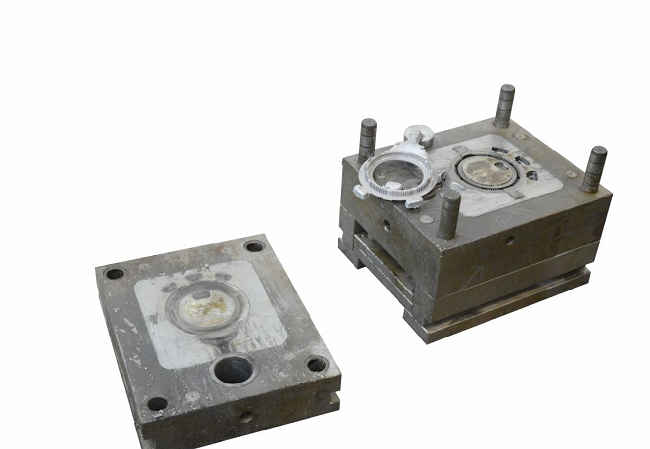Causes To Deformation And Cracking Of Die Casting After Heat Tratment & How To Prevent
Because of the complicated shape and structure of die-casting mold parts, there are evident changes in the section size of each part throughout the manufacture and processing of die-casting mold parts. As a result, the heating and cooling rates of each part during heat treatment are also variable. Thermal stress, structural stress, and phase transformation volume can all be formed in different ways in different parts of the part as a result of this circumstance. As a result, pieces experience abnormal expansion or contraction of their volume, which results in significant variation between their size and shape and sometimes cracking.

Causes To Deformation And Cracking Of Die Casting Mold After Heat Treatment
There are many reasons for the deformation and cracking of die-casting mold after heat treatment, including the chemical composition and original structure of steel, the structural shape and section size of parts, heat treatment process and so on. In actual production, deformation can not be completely eliminated and can only be minimized. However, cracking can be avoided as long as appropriate measures are taken.
How To Prevent Deformation And Cracking Of Die Casting Mold After Heat Treatment
1. Preliminary heat treatment
Compared with the final heat treatment, the so-called preliminary heat treatment is to add a preliminary heat treatment step before the final heat treatment, which can provide a good machining performance or microstructure for the final heat treatment. Common preparatory heat treatment processes include annealing, normalizing, quenching and tempering, etc.
For the preliminary heat treatment of eutectoid steel stamping die, the focus is to eliminate the network secondary cementite, refine the grain and internal stress in the forging. The specific process is normalizing first, and then spheroidizing annealing. For stamping die parts, low-temperature tempering shall be used for stabilization treatment. For those molds with complex shape and high precision requirements, due to the higher possibility of deformation and cracking during heat treatment, appropriate quenching and tempering treatment shall be carried out after rough machining and before finishing, so as to make organizational preparation for the final heat treatment, so as to avoid cracking as far as possible.
2. Quenching heating mode and protection of parts
Quenching and tempering are the processes that are most likely to cause deformation and cracking of parts. For some small die-casting molds, slender cylindrical parts or high alloy steel mold parts, the quenching method of direct heating should be avoided. Instead, they should be preheated to 520 to 580 ℃, and then heated to the quenching temperature in a medium temperature salt bath furnace. Practice has proved that the deformation of parts with this heating method is obviously smaller than that directly heated and quenched in electric furnace or reverberatory furnace, and the cracking can be basically avoided.
During quenching, if the heating temperature of austenitic parts is too high, the grains will be coarse, and it is easy to cause oxidation and decarburization, resulting in deformation and cracking of parts; If the temperature is too low, the inner hole of the part will shrink and the pore size will become smaller. Therefore, the upper temperature limit should be selected as far as possible for quenching within the allowable range of heating temperature. For alloy steel, if the heating temperature is too high, the inner hole will expand and the pore size will become larger. It is best to choose the lower limit of the allowable temperature.
In addition, during quenching and tempering, it is necessary to take measures to effectively protect the parts prone to deformation and cracking, so as to make their shape symmetrical with the section and keep the internal stress balanced. Especially for those parts with complex shapes. Common protection methods include baling method, filling method and blocking method.
3. Optimization of cooling mode and selection of coolant
When the die-casting die parts are heated, they should not be directly put into the coolant after being taken out of the furnace, which is easy to cause excessive local temperature difference and lead to deformation and cracking. The correct method is to put the parts in the air for precooling, and then put them into the coolant for quenching. In order to ensure uniform cooling speed of all parts of the part, proper rotation shall be carried out after putting in the coolant, and the rotation direction is preferably not fixed.
The choice of coolant is also important. For alloy steel, isothermal quenching or step quenching with potassium nitrate and sodium nitrite hot bath is an effective method to reduce deformation, especially for die casting molds with complex shape and accurate size requirements. Some porous die parts have the characteristics of cooling shrinkage in oil and cooling expansion in nitrate. Rational use of two different media can also reduce the deformation of parts caused by quenching.
4. Control of tempering treatment
After quenching in the coolant, the die-casting die parts should not stay in the air for too long, but should be put into the tempering furnace for tempering treatment in time, so as to eliminate the internal stress of the parts and reduce the tendency of deformation and cracking. Especially for some die-casting die parts that need to be processed by wire cutting, hierarchical quenching and multiple tempering heat treatment before on-line cutting can effectively improve the hardenability of the parts, make the internal stress distribution uniform and prevent deformation and cracking. In the process of tempering treatment, the occurrence of low-temperature tempering brittleness and high-temperature tempering brittleness must be avoided.

